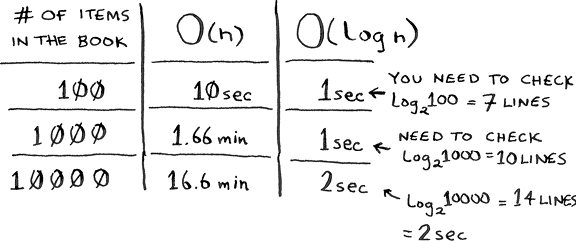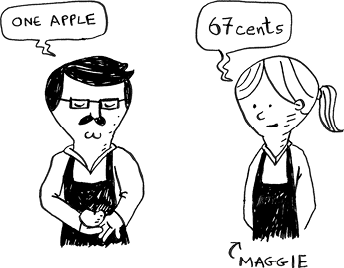In this chapter
- You learn about hash tables, one of the most useful data structures. Hash tables have many uses; thischapter covers the common use cases.
- You learn about the internals of hash tables: implementation, collisions, and hash functions. These properties will help you understand how to analyze a hash table’s performance.
Suppose you work at a grocery store. When a customer buys produce, you have to look up the price in a book. If the book is unalphabetized, it can take you a long time to look through every single line for apple. You’d be doing simple search from chapter 1, where you have to look at every line. Do you remember how long that would take? O(n) time. If the book is alphabetized, you could run binary search to find the price of an apple. That would only take O(log n) time.


As a reminder, there’s a big difference between O(n) and O(log n) time! Suppose you could look through 10 lines of the book per second. Here’s how long simple search and binary search would take you.

You already know that binary search is darn fast. But as a cashier, looking things up in a book is a pain, even if the book is sorted. You can feel the customer steaming up as you search for items in the book. What you really need is a buddy who has all the names and prices memorized. Then you don’t need to look up anything: you ask her, and she tells you the answer instantly.
